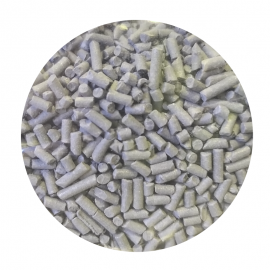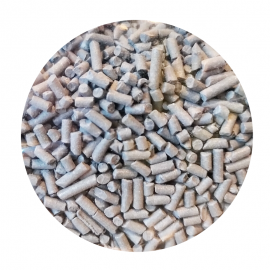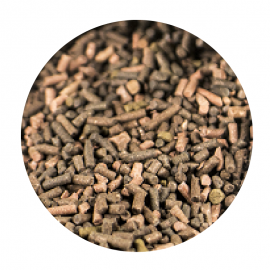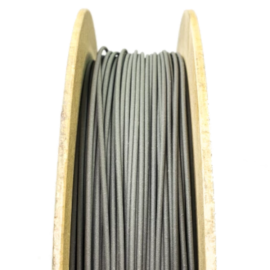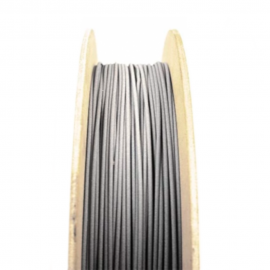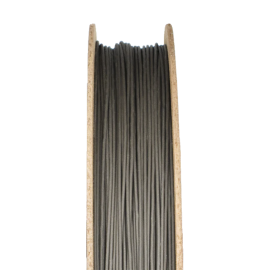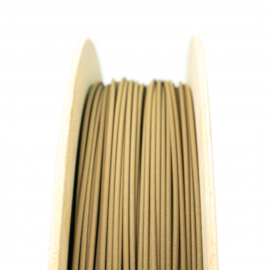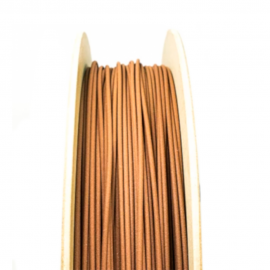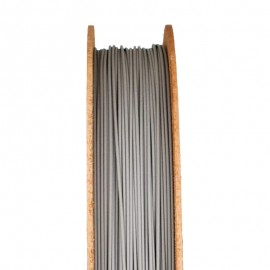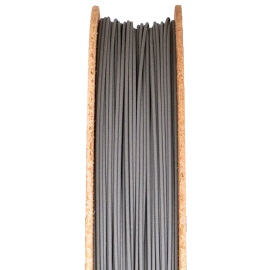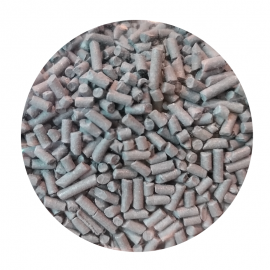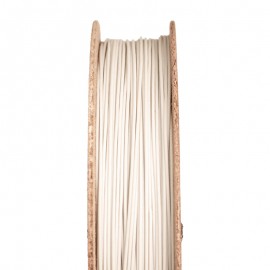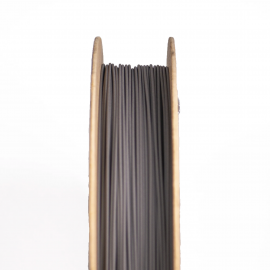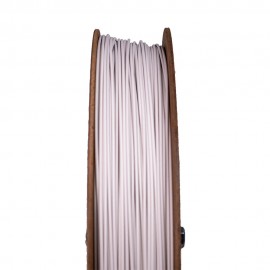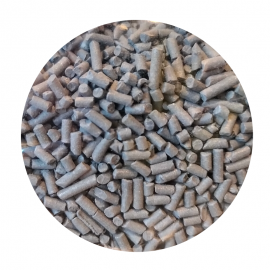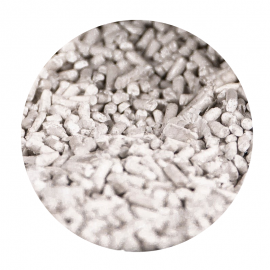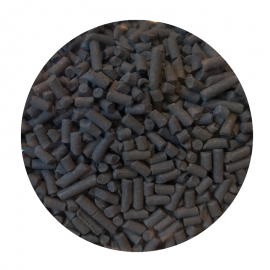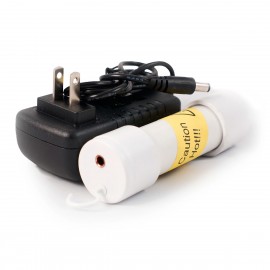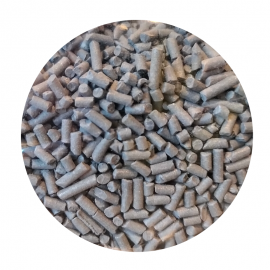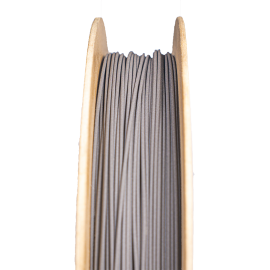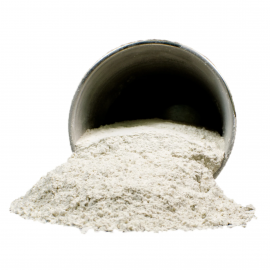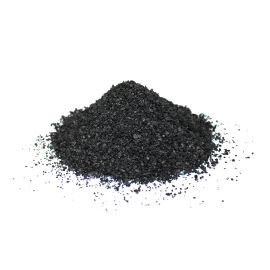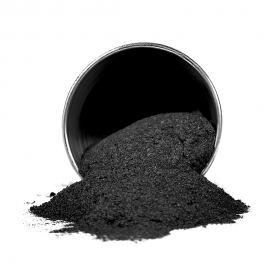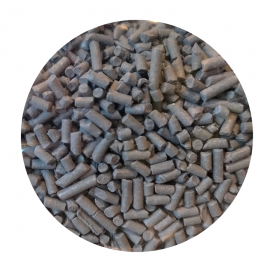No products
Product successfully added to your cart
0 products in the cart 1 product in the cart

The Virtual Foundry
The Virtual Foundry has developed filaments and pellets that allow to obtain all-metal parts after sintering, maintaining the natural properties of the metals themselves. The brand also offers various accessories and materials for sintering.
-
316L stainless steel Filamet™ pellets 316L stainless steel Filamet™ pellets
399,80 € tax excl.
399,80 € tax incl.316L Filamet™ stainless steel pellets for making metal filament or using pellet extruder. 316L Filamet™ stainless steel pellets for making metal filament or using pellet extruder.
-
Aluminium 6061 Filamet™ Pellets Aluminium 6061 Filamet™ Pellets
629,80 € tax excl.
629,80 € tax incl.Aluminium 6061 Filamet™ pellets for making metal filament or using pellet extruder. Aluminium 6061 Filamet™ pellets for making metal filament or using pellet extruder.
-
Copper Filamet™ pellets Copper Filamet™ pellets
259,80 € tax excl.
259,80 € tax incl.Copper Filamet™ pellets for making metal filament or using pellet extruder. Copper Filamet™ pellets for making metal filament or using pellet extruder.
-
Crucible for sintering Crucible for sintering
29,00 € tax excl.
29,00 € tax incl.Crucible needed to sinter 3D printed parts with Filamet™ metallic filament. Crucible needed to sinter 3D printed parts with Filamet™ metallic filament.
-
Filamet - Metal 3D Printing Evaluation Kit Filamet - Metal 3D Printing Evaluation Kit
149,90 € tax excl.
149,90 € tax incl.Evaluation kit with everything needed for printing and sintering of Copper Filamet parts. Evaluation kit with everything needed for printing and sintering of Copper Filamet parts.
-
Filamet 316L stainless steel Filamet 316L stainless steel
209,90 € tax excl.
209,90 € tax incl.With 82 % metal, all metal parts with the properties of 316L stainless steel are achieved. With 82 % metal, all metal parts with the properties of 316L stainless steel are achieved.
-
Filamet 6061 aluminum Filamet 6061 aluminum
319,90 € tax excl.
319,90 € tax incl.With 82 % metal, total metal parts with the properties of 6061 aluminum are achieved. With 82 % metal, total metal parts with the properties of 6061 aluminum are achieved.
-
Filamet Basalt Moon Dust Filamet Basalt Moon Dust
531,99 € tax excl.
531,99 € tax incl.Fully sinterable filament for 100 % basalt parts with a moon dust surface finish. Fully sinterable filament for 100 % basalt parts with a moon dust surface finish.
-
Filamet bronze Filamet bronze
159,90 € tax excl.
159,90 € tax incl.With 87 % bronze, all metal parts can be obtained and with the advantages of bronze alloy. With 87 % bronze, all metal parts can be obtained and with the advantages of bronze alloy.
-
Filamet copper Filamet copper
129,90 € tax excl.
129,90 € tax incl.With 89 % metal, metal parts with copper properties (radiation protection) are achieved. With 89 % metal, metal parts with copper properties (radiation protection) are achieved.
-
Filamet H13 Tool Steel Filamet H13 Tool Steel
230,31 € tax excl.
230,31 € tax incl.Filament with 86.8 % H13 tool steel, ideal for strong and wear resistant parts. Filament with 86.8 % H13 tool steel, ideal for strong and wear resistant parts.
-
Filamet high carbon iron Filamet high carbon iron
138,90 € tax excl.
138,90 € tax incl.With 79 % metal, ideal for strong parts and as a core of electromagnets. With 79 % metal, ideal for strong parts and as a core of electromagnets.
-
Filamet Inconel 718-34 Filamet Inconel 718-34
315,00 € tax excl.
315,00 € tax incl.With 86% metal, all-metal parts with the properties of Inconel 718 are obtained. With 86% metal, all-metal parts with the properties of Inconel 718 are obtained.
-
Filamet M300 Tool Steel Filamet M300 Tool Steel
140,90 € tax excl.
140,90 € tax incl.Filament with 84.2 % M300 tool steel, ideal for ductile parts with superior strength and toughness. Filament with 84.2 % M300 tool steel, ideal for ductile parts with superior strength and toughness.
-
-
Filamet Pure Iron pellets Filamet Pure Iron pellets
277,80 € tax excl.
277,80 € tax incl.Ferromagnetic PLA that yields fully metal parts after debinding and sintering. Ferromagnetic PLA that yields fully metal parts after debinding and sintering.
-
Filamet PYREX (borosilicate glass) Filamet PYREX (borosilicate glass)
124,50 € tax excl.
124,50 € tax incl.PLA-based filament with 73% PYREX borosilicate glass to create 100% glass parts. PLA-based filament with 73% PYREX borosilicate glass to create 100% glass parts.
-
Filamet Silicon carbide Filamet Silicon carbide
179,90 € tax excl.
179,90 € tax incl.PLA filament with silicon carbide filler to create all-ceramic parts. PLA filament with silicon carbide filler to create all-ceramic parts.
-
Filamet Stainless steel 17-4 Filamet Stainless steel 17-4
164,90 € tax excl.
164,90 € tax incl.With 85 % metal, all-metal parts with the properties of 17-4 stainless steel are achieved. With 85 % metal, all-metal parts with the properties of 17-4 stainless steel are achieved.
-
Filamet Titanium 64-5 Filamet Titanium 64-5
1 145,00 € tax excl.
1 145,00 € tax incl.With 80 % metal, all metal parts with the properties of Ti6Al4Va are achieved. With 80 % metal, all metal parts with the properties of Ti6Al4Va are achieved.
-
Filamet Zirconium Silicate Zircopax® Filamet Zirconium Silicate Zircopax®
124,50 € tax excl.
124,50 € tax incl.PLA based filament with 60% zirconium silicate to create 100% ceramic parts. PLA based filament with 60% zirconium silicate to create 100% ceramic parts.
-
Filamet™ 17-4 stainless steel pellets Filamet™ 17-4 stainless steel pellets
291,80 € tax excl.
291,80 € tax incl.17-4 Filamet™ stainless steel pellets for making metal filament or using pellet extruder. 17-4 Filamet™ stainless steel pellets for making metal filament or using pellet extruder.
-
Filamet™ circonium silicate pellets Filamet™ circonium silicate pellets
249,00 € tax excl.
249,00 € tax incl.Filamet™ zirconia silicate pellets for making ceramic filament or using pellet extruder. Filamet™ zirconia silicate pellets for making ceramic filament or using pellet extruder.
-
Filamet™ high-carbon steel pellets Filamet™ high-carbon steel pellets
277,80 € tax excl.
277,80 € tax incl.Filamet™ high carbon steel pellets for making metal filament or using pellet extruders. Filamet™ high carbon steel pellets for making metal filament or using pellet extruders.
-
Filamet™ silicon carbide pellets Filamet™ silicon carbide pellets
299,80 € tax excl.
299,80 € tax incl.Filamet™ silicon carbide pellets for making ceramic filament or using pellet extruder. Filamet™ silicon carbide pellets for making ceramic filament or using pellet extruder.
-
Filamet™ tungsten pellets Filamet™ tungsten pellets
910,00 € tax excl.
910,00 € tax incl.Filamet™ tungsten pellets to make metal filament or use pellet extruder. Filamet™ tungsten pellets to make metal filament or use pellet extruder.
-
FilaWarmer - Metallic filament heater FilaWarmer - Metallic filament heater
100,00 € tax excl.
100,00 € tax incl.Device required to print certain metallic filaments (Filamet ™). Device required to print certain metallic filaments (Filamet ™).
-
Inconel 718 Filamet™ pellets Inconel 718 Filamet™ pellets
630,00 € tax excl.
630,00 € tax incl.Inconel 718 Filamet™ pellets for making metal filament or using pellet extruders. Inconel 718 Filamet™ pellets for making metal filament or using pellet extruders.
-
Pellets Bronze Filamet™ Pellets Bronze Filamet™
311,80 € tax excl.
311,80 € tax incl.Bronze Filamet™ and PLA pellets for making metal filament or using pellet extruder. Bronze Filamet™ and PLA pellets for making metal filament or using pellet extruder.
-
Pyrex (borosilicate) Filamet™ pellets Pyrex (borosilicate) Filamet™ pellets
249,00 € tax excl.
249,00 € tax incl.Pyrex (borosilicate) Filamet™ pellets for making glass filament or using pellet extruder. Pyrex (borosilicate) Filamet™ pellets for making glass filament or using pellet extruder.
-
Rapid 3DShield Tungsten filament TVF Rapid 3DShield Tungsten filament TVF
455,00 € tax excl.
455,00 € tax incl.With 91-93 % metal, radiation shielding parts are obtained without the need to be sintered. With 91-93 % metal, radiation shielding parts are obtained without the need to be sintered.
-
Refractory powder - Al2O3 Refractory powder - Al2O3
34,90 € tax excl.
34,90 € tax incl.Refractory powder for sintering printed parts with Filamet™ metal filaments. Refractory powder for sintering printed parts with Filamet™ metal filaments.
-
Refractory sintering talcum powder Refractory sintering talcum powder
14,95 € tax excl.
14,95 € tax incl.Substitute for Al2O3 in the sintering of copper and bronze. Improves the surface finish of the parts. Substitute for Al2O3 in the sintering of copper and bronze. Improves the surface finish of the parts.
-
Sintering coconut charcoal Sintering coconut charcoal
29,75 € tax excl.
29,75 € tax incl.Coconut shell activated charcoal for use in metal sintering. Coconut shell activated charcoal for use in metal sintering.
-
Steel mix refractory powder Steel mix refractory powder
98,50 € tax excl.
98,50 € tax incl.Refractory powder for sintering 3D printed parts with Filamet™ metal filaments. Refractory powder for sintering 3D printed parts with Filamet™ metal filaments.
-
Titanium 64-5 Filamet™ Pellets Titanium 64-5 Filamet™ Pellets
1 990,00 € tax excl.
1 990,00 € tax incl.Titanium 64-5 Filamet™ pellets for making metal filament or using pellet extruder. Titanium 64-5 Filamet™ pellets for making metal filament or using pellet extruder.
Pioneers in metal FDM 3D printing
The Virtual Foundry is an American company formed by great experts in the sector of molten metal, who have been constantly working since 2014 to improve and grow their range of filaments and accessories for metal FDM 3D printing. Over the years, TVF has become the ultimate reference in the world of additive manufacturing. The TVF products are designed to solve and simplify problems through innovative metallic materials for FDM 3D printers of any kind.
Rich material offer
One of the main limitations of the FDM/FFF 3D printing technology was that only polymeric materials could be printed and metal additive manufacturing was synonymous limited to the DMLS technology. Then the Virtual Foundry revolutionized the FDM 3D printing world with the Filamet filaments (also available in pellet format) encapsulating materials such as stainless steel, aluminium, copper, bronze, tool steel, pyrex, titanium, tungsten or zirconium silicate in a spool of user-friendly filament. Although it is true that the FDM technology cannot provide fully isotropic and poreless metal parts, there is a wide range of industrial (and non-industrial) applications that do not require these qualities in the final parts.
No debinding required
After years of research and development, The Virtual Foundry has managed to develop filaments that, with just post-processing by sintering, allow to obtain all-metal parts and, most importantly, maintain the natural properties of the metals themselves, be it magnetism, electrical conductivity or radiation shielding. The great innovation of these filaments is that in order to obtain the totally metallic parts it is only necessary to print the part and sinter it in an oven, while similar materials by other manufacturers usually require the intermediary step of debinding (a chemical process to separate the binder polymers from the metal).

